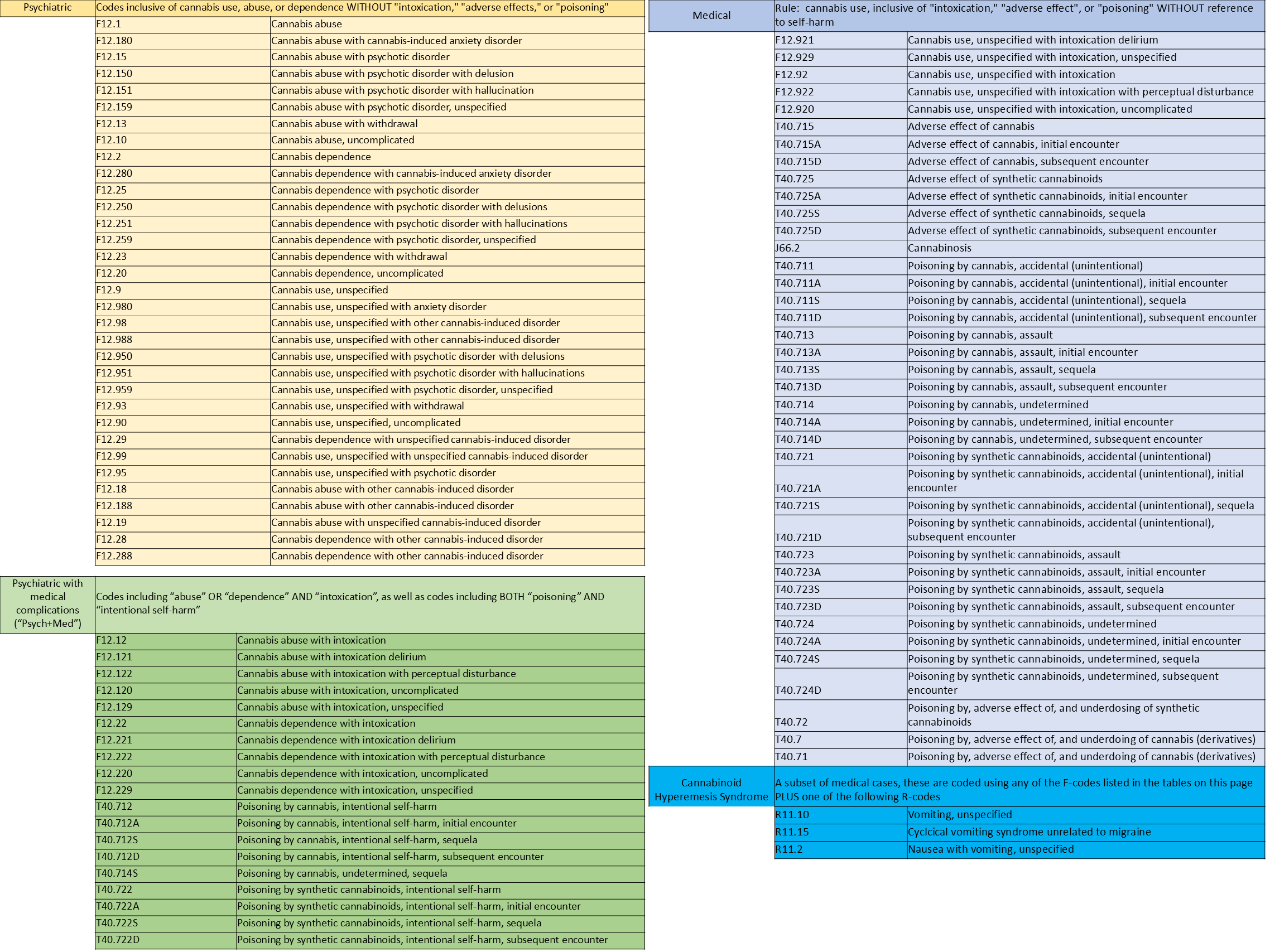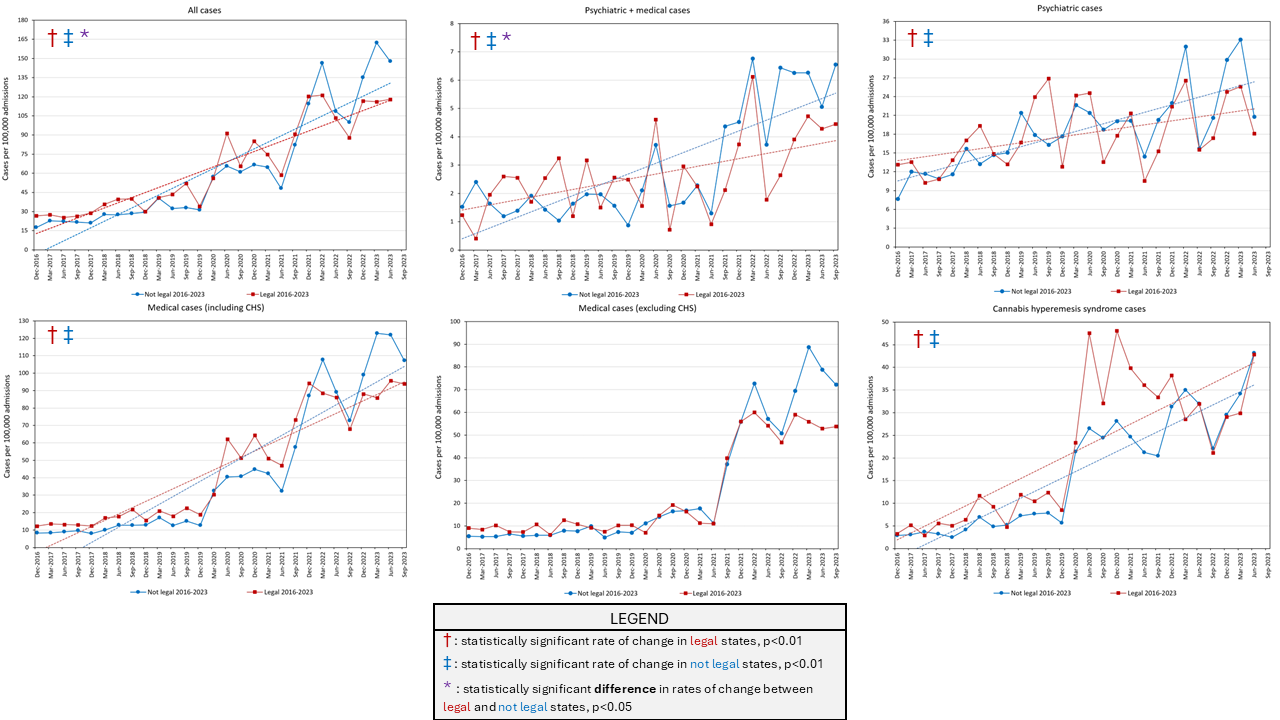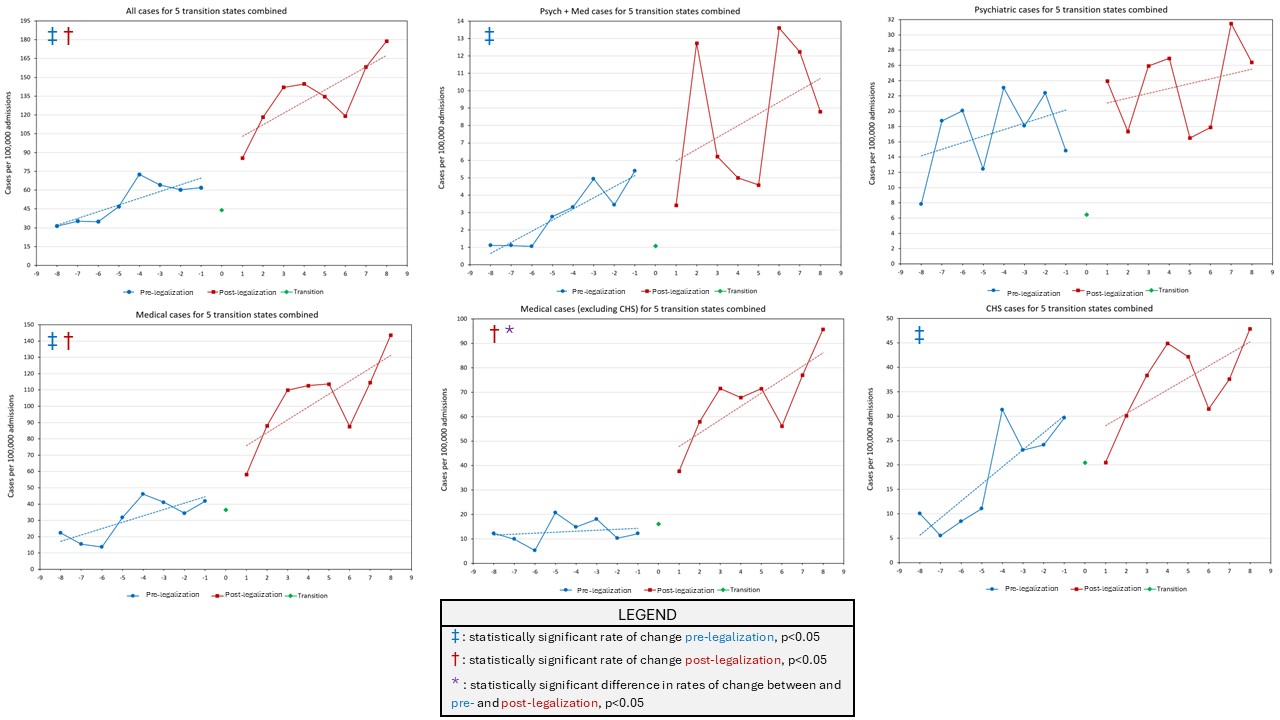Public Health & Prevention 3
Session: Public Health & Prevention 3
783 - Does Legalization Affect Hospitalization? The Effects of Statewide Recreational Marijuana Legalization on National Trends of Cannabis-Associated Encounters to Pediatric Hospitals from 2016-2023
Monday, April 28, 2025
7:00am - 9:15am HST
Publication Number: 783.4895
Matthew Z. Dawson, Dayton Children's Hospital, Oakwood, OH, United States; Timothy T. Phamduy, Dayton Children's Hospital, Dayton, OH, United States; Adrienne Stolfi, Wright State University Boonshoft School of Medicine, Dayton, OH, United States; Amy M. Jeffers, Dayton Children's Hospital, Dayton, OH, United States

Matthew Z. Dawson, MD (he/him/his)
Pediatric Hospitalists
Dayton Children's Hospital
Oakwood, Ohio, United States
Presenting Author(s)
Background: With evolving recreational marijuana laws across the US, observers have expressed concern about increasing pediatric medical and psychiatric complications associated with cannabis. Though state-level analyses suggest increasing cannabis-associated encounters (CE), there is no holistic assessment of this burden on pediatric healthcare.
Objective: Using the Pediatric Health Information System (PHIS): 1) examine trends in US pediatric CE between 2016-2023, 2) assess differences in CE rates between states that legalized recreational marijuana before 2016 (“legal”) against states that had not legalized by 2023 (“not legal”), and 3) analyze changes pre- and post-legalization in states where recreational cannabis was legalized during the study period (“transitional”).
Design/Methods: Encounters with cannabis-associated ICD-10 codes from1/1/2016 to 12/31/2023 at PHIS hospitals were collected for patients 0-18 years old and were categorized as medical, psychiatric, or combined (“med+psych”) (Table). Time series analyses over 3-month intervals were conducted to assess rate of change in CE. Changes in CE rates in legal and not legal states were compared. Transitional states had pre- and post-analyses on CE rates done based on legalization date. Age, length of stay (LOS), and ICU admission rate were compared among all groups.
Results: We found complete data for all months 12/1/2016-11/30/2023 with 18,221 encounters meeting inclusion criteria. Regardless of legal status, rates of all CE increased. Legal states had a lower rate of change (p=0.037) compared to not legal states (Figure 1). ICU admission was less common in legal versus not legal states (2.8% vs 3.7% of CE, p=0.006); LOS was similar (1.5 days).
In aggregate, transitional states showed no difference in CE rates pre- and post-legalization. Post-legalization, patients were younger (15.7 vs 12.5, p< 0.001) and more likely to be admitted to the ICU (0.3% vs 3.1% of CE, p=0.008). On subgroup analysis, a significant increase (p=0.022) in the rates of medical CE, excluding cannabinoid hyperemesis, was observed post-legalization (Figure 2).
Conclusion(s): Rates of CE at pediatric hospitals have increased since 2016. Legalization correlates with a sharp increase in CE rates and ICU admissions for medical concerns in younger patients, possibly due to accidental ingestion. However, in the long-term, legalization may slow the CE rate increase without impacting ICU admission or LOS. Public health interventions targeting accidental cannabis exposure in young children in the immediate post-legalization period may ease the healthcare burden as states relax cannabis laws.
Table: Cannabis-associated ICD-10 codes separated into medical, psychiatric, and combined medical/psychiatric presentations.
 The above tables list the ICD-10 codes used to query the PHIS database for cannabis-associated encounters. Each table separates a category of the codes - medical, psychiatric, or combined medical/psychiatric - with a brief ruleset explaining how the codes were sorted. These categories were used to perform subgroup analyses for the cannabis-associated encounter rates in legal, not legal, and transitional states. Note the subset of medical codes designating cannabinoid hyperemesis.
The above tables list the ICD-10 codes used to query the PHIS database for cannabis-associated encounters. Each table separates a category of the codes - medical, psychiatric, or combined medical/psychiatric - with a brief ruleset explaining how the codes were sorted. These categories were used to perform subgroup analyses for the cannabis-associated encounter rates in legal, not legal, and transitional states. Note the subset of medical codes designating cannabinoid hyperemesis.Figure 1: Time series describing rates of change of cannabis-associated encounters in states without legalized recreational marijuana (blue) and states with legalized marijuana starting before 2016 (red)
 These six graphs indicate rates of change of cannabis-associated encounters in states where recreational marijuana has been legal since at least 2016 and states that have yet to legalize, in aggregate and separated into categories by ICD-10 codes (see TABLE for explanation of code categories). Linear regression for rates of change given by dashed lines. Regression not plotted for medical cases (excluding CHS) due to non-linearity. CHS = cannabinoid hyperemesis syndrome.
These six graphs indicate rates of change of cannabis-associated encounters in states where recreational marijuana has been legal since at least 2016 and states that have yet to legalize, in aggregate and separated into categories by ICD-10 codes (see TABLE for explanation of code categories). Linear regression for rates of change given by dashed lines. Regression not plotted for medical cases (excluding CHS) due to non-linearity. CHS = cannabinoid hyperemesis syndrome.Figure 2: Interrupted time series describing rate of change of cannabis-associated encounters pre- and post-legalization in five states that legalized cannabis from 2016-2023
 These six graphs indicate rates of change of cannabis-associated encounters in five states which legalized between 2016 and 2023, in aggregate and separated into categories by ICD-10 codes (see TABLE for explanation of code categories). Linear regression for rates of change given by dashed lines. T0= legalization date. X-axis intervals indicate number of 3-month periods pre-legalization (blue) or post-legalization (red). CHS = cannabinoid hyperemesis syndrome.
These six graphs indicate rates of change of cannabis-associated encounters in five states which legalized between 2016 and 2023, in aggregate and separated into categories by ICD-10 codes (see TABLE for explanation of code categories). Linear regression for rates of change given by dashed lines. T0= legalization date. X-axis intervals indicate number of 3-month periods pre-legalization (blue) or post-legalization (red). CHS = cannabinoid hyperemesis syndrome.
